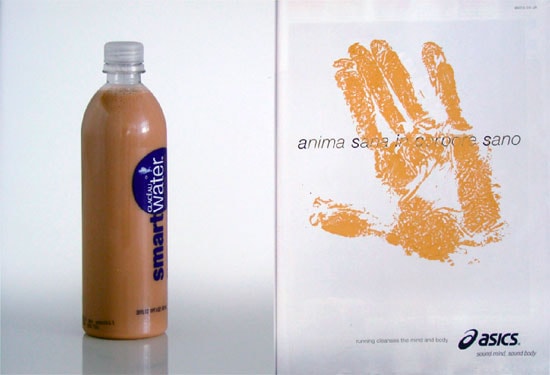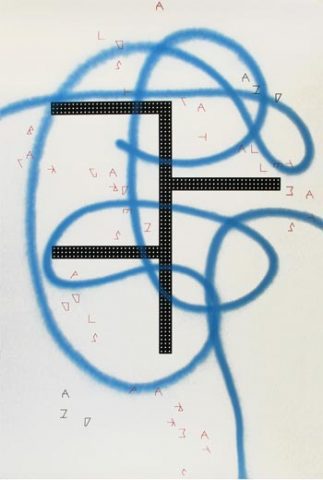Pamela Rosenkranz
As Add
2010
DESCRIPTION
Inkjet printing and acrylic handprint made by hand by the artist.
DIMENSIONS
42 x 29 cm
Edition of 14 (+2 HC & 7 AP) signed, dated, and numbered on back by the artist.
Price
CHF 1500
Frame with anti-glare glass: CHF 450

Edition of the Centre d’Art Contemporain for the Pamela Rosenkranz exhibition, March 2010. Pamela Rosenkraz’s use of skin coloured painting on her sculptures is here used to emboss a limited edition. The skin of her hand seems to have melted on the paper. The result seems to contradict the Latin inscription that it attempts to hide.
The Latin quote is by the satirical poet Juvenal. It has also been used as the acronym of a sports brand. It has a positive meaning for the sport brand yet originally it has a negative tone: “You should pray for a sound mind in a sound body”. The mechanism of advertisement is here re-enacted by the sculpture “Firm Being”, a bottle filled with water that creates an odd feeling of revulsion.




